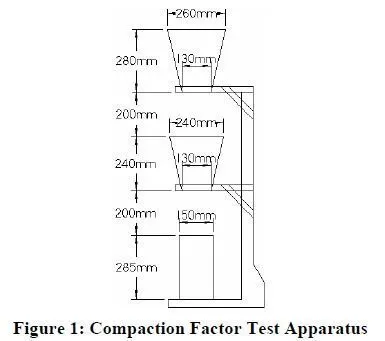The Flow of High Performance Concrete Meter (FHPCM) is based on the design of the Tattersall two-point device (MKII) and was developed specifically for measuring highly flowable concrete mixtures (Yen et al. 1999; Tang et al. 2001).
The FHPCM features a coaxial cylinders geometry. The outer cylinder is 226.1 mm in diameter and 170.75 mm in height. The inner spindle is 149.9 mm in diameter, 150.75 mm in height and is set 20 mm above the bottom of the outer cylinder. The inner spindle rotates while the outer cylinder remains fixed. Ribs attached to the outer cylinder prevent slip. The rotation speed of the inner spindle is reduced from an initial maximum value in a stepwise fashion. The torque required to turn the spindle is considered the sum of the torque in the annulus (area between the outer and inner cylinders) and the torque in the space under the bottom of the spindle. The torque in the annulus and in the space below the spindle can be described with equations for coaxial cylinders rheometers and parallel plate rheometers, respectively. From these equations the yield stress and plastic viscosity can be calculated in fundamental units. The device is calibrated using a fluid of known flow properties. Yen et al. (1999) used malt sugar with known properties, as measured with an established traditional coaxial cylinder viscometer.
The geometry of the FHPCM is problematic. The ratio of the outer cylinder radius to the inner cylinder radius is 1.51. The maximum aggregate size that can be tested, based on the maximum aggregate size being 1/5 the distance between the outer and inner cylinders, is 7.6 mm. In research (Yen et al. 1999) conducted using the FHPCM, the maximum size of aggregate used was 12.7 mm. The rheometer, which is considered appropriate only for highly flowable concretes, has been used successfully for concretes with slumps of 140 mm to 280 mm.
Advantages:
The device measures yield stress and plastic viscosity for highly flowable concretes.
The operation of the device is automated.
Disadvantages:
The device was developed for research and has not been verified with extensive laboratory testing.
The device is only appropriate for highly flowable concretes.
Based on general principles of coaxial cylinders rheometers, the geometry of the FHPCM is problematic.
The device is too large for field use.
